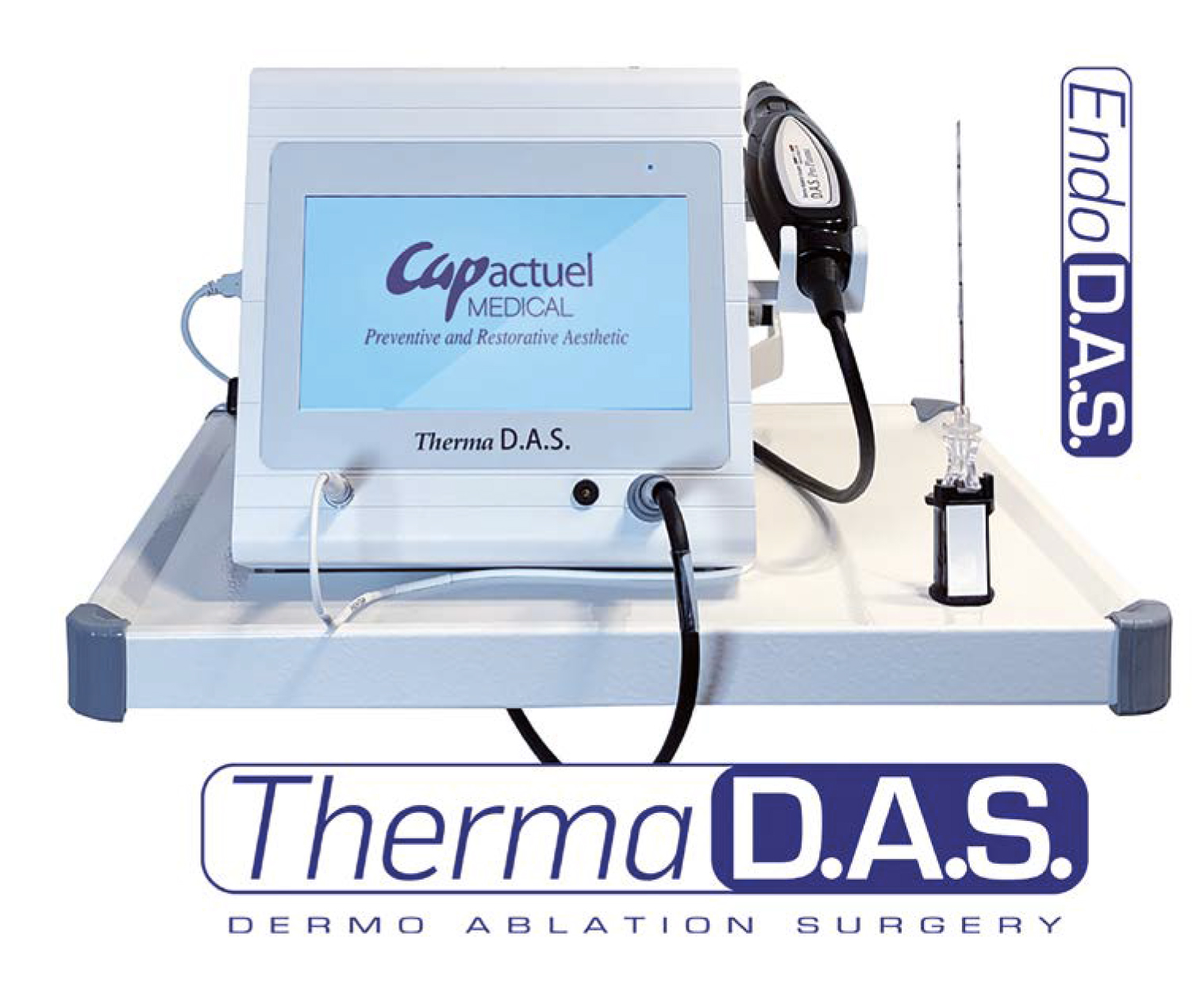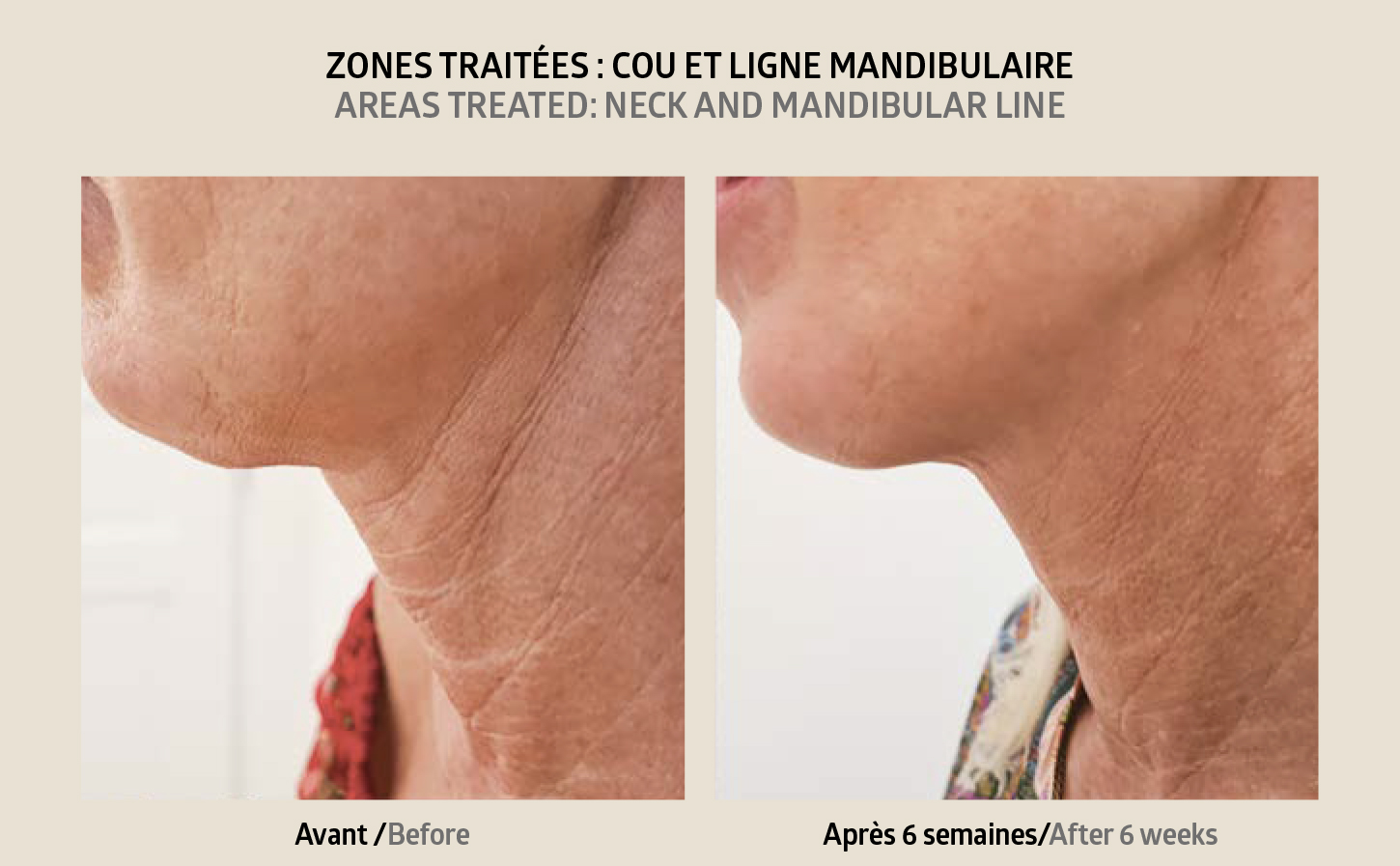By the Doctor Claire Sabatier-Cabrol and the Doctor Henry Sabatier
The latest way to use radiofrequency (RF) in aesthetic medicine involves emitting the waves directly into the different layers of tissue through a cannula. When emitted directly into the tissue and fat, the radiofrequency treatment is more accurate and even more effective.
We talked to aesthetic doctor Dr Claire Sabatier-Cabrol and aesthetic surgeon Dr Henry Sabatier in their surgery, “Le 43” in Nice, about their impressions and experiences using this technology, as well as its benefits.

Dr Claire Sabatier-Cabrol, what do you think about using radiofrequency in aesthetic medicine?
I think that, until recently, there was nothing medical about RF. The aim of using RF is to generate a heat source in order  to stimulate the dermis and boost the production of collagen and elastin fibres and all of the components of the extracellular matrix. The effects are modest when the RF is applied to the skin’s surface, as the heat only diffuses across the superficial dermis. This is why the EndoD.A.S. is so good, and why it requires medical expertise. Thanks to the cannula, the heat is emitted much deeper and in a more targeted way, making it more intense. The collagen is denatured, and new collagen is produced. The mechanical action of inserting the cannula into the skin also has an effect.
to stimulate the dermis and boost the production of collagen and elastin fibres and all of the components of the extracellular matrix. The effects are modest when the RF is applied to the skin’s surface, as the heat only diffuses across the superficial dermis. This is why the EndoD.A.S. is so good, and why it requires medical expertise. Thanks to the cannula, the heat is emitted much deeper and in a more targeted way, making it more intense. The collagen is denatured, and new collagen is produced. The mechanical action of inserting the cannula into the skin also has an effect.
And for you, Dr Henry Sabatier, as an aesthetic surgeon?
Until now, I have only used external RF devices in my treatments because I believe that this technology is more suited to paramedical treatments. However, using RF inside the tissue opens up new and very interesting possibilities for beautifying the face and body.
What happens during the procedure?
Once we have identified and disinfected the treatment zones, we administer a light local anaesthetic to make the session pain-free and more comfortable. The cannula is then inserted underneath the skin, monitored by the operator’s eye and by the ThermaD.A.S. system. Several series of 30-second shots are emitted at centimetre intervals in a retrograde pattern across the treatment zone, in a fan pattern on the face, for example.
Can this treatment be tailored to the patient?
Yes, that is what makes it so good: we can alter the temperature of the cannula tip according to the tissue and the patient’s features. We can also alter the frequency, to further personalise and optimise the results.
This way, we can increase the temperature if we want to reduce excess fat as well as tightening up the skin.
How long do the sessions take?
It takes 180 seconds for the cannula to be passed across the treatment area. The anaesthetic lasts around 45 minutes on average, which gives us enough time to treat the face or neck. For other areas of the body, we schedule an appointment prior to treatment to decide how many lines will be traced and therefore how much time it will take.
What are the after-effects?
They are very mild – maybe a bit of bruising and swelling – and do not require any downtime. The first results are visible immediately: not only are they maintained but they will actually improve over the next 2 to 3 months.
What do you think of the machine and its use?
The ThermaD.A.S. is streamline and looks good. It is equipped with two different technologies.
The first technology is well known: D.A.S., which uses plasma energy to beautify the superficial dermis/epidermis and allows us to carry out medical blepharoplasties, treat fine lines and crow’s feet wrinkles, the lips, and also to erase keratosis, molluscum, xanthelasma, etc.
The second technology in the ThermaD.A.S. is intra-tissue radiofrequency. The interface is very practical: the touch screen is intuitive with a number of pre-settings which allow for straightforward and safe use.
The operator can adjust the settings at any time during the procedure, according to the different treatment zones.
What are the benefits of using a cannula?
Its rigidity and length allow for the accurate and extensive treatment of an area of skin though a single entry point. Visual and tactile monitoring allow us to know exactly where the can- nula tip is at any moment in time, and this is the only part that emits heat. The cannula is graduated, meaning that we can easily retract it by 1cm to the next heating point.
The rigid nature of the cannula means that it can even be passed through tissues that have already been operated on or tissues that are fibrous, unlike more supple systems like fibres.
 As a surgeon, what indications have you identified?
As a surgeon, what indications have you identified?
There are two main indications for the face:
After a lift, immediately after surgery, to benefit from the effects of sending the RF directly into the tissues. The EndoD.A.S. adds a biological effect to the mechanical effect of the lift, which optimises the results.
The other indication is its use between operations: depending on the tissue quality, secondary sagging may occur especially in the jowls or chin. The EndoD.A.S. can correct this sagging in a single session, which can be repeated if required.
For the body, we do not yet have enough long-term data, but I think that by developing specific cannulas combined with suitable settings, we can improve the areas of the body which, until now, were not easily treatable with surgery: for example, sagging arms, crinkling around the belly button and the area above the knees.
As an aesthetic doctor, in what situation do you use the EndoD.A.S.?
I suggest it for patients who come to see me with a loss of skin density and/or sagging on their face and neck. I think I will start recommending it for the body too.
Not only can we firm up the subcutaneous tissues, but we can also improve the skin quality. I like to combine it with PRF injections which potentiate the results. It can be used in all seasons and on all skin types.
Thank you both for sharing your experiences as a doctor and surgeon using this new procedure for the face. We look forward to hearing more about the body treatments soon!
 By the Doctor Claire Sabatier-Cabrol, Aesthetic doctor.
By the Doctor Claire Sabatier-Cabrol, Aesthetic doctor.
Graduate of Montpellier medical faculty, degree in the Evaluation of Injection and Filler Techniques in Dermatology and Plastic Surgery. Inter-university degree in aesthetic dermatology procedures – the rules of art and vigilance.
Active member and co-director of the aesthetic doctor section of the SAMCEP.
And the Doctor Henry Sabatier, Aesthetic surgeon.
Former junior doctor and assistant at Strasbourg university hospitals.
Registrar at the Strasbourg Faculty of Medicine. Member of the SOFCEP.
Member of the ISAPS. President of the SAMCEP.
More information on medecine-esthetique-nice.com














